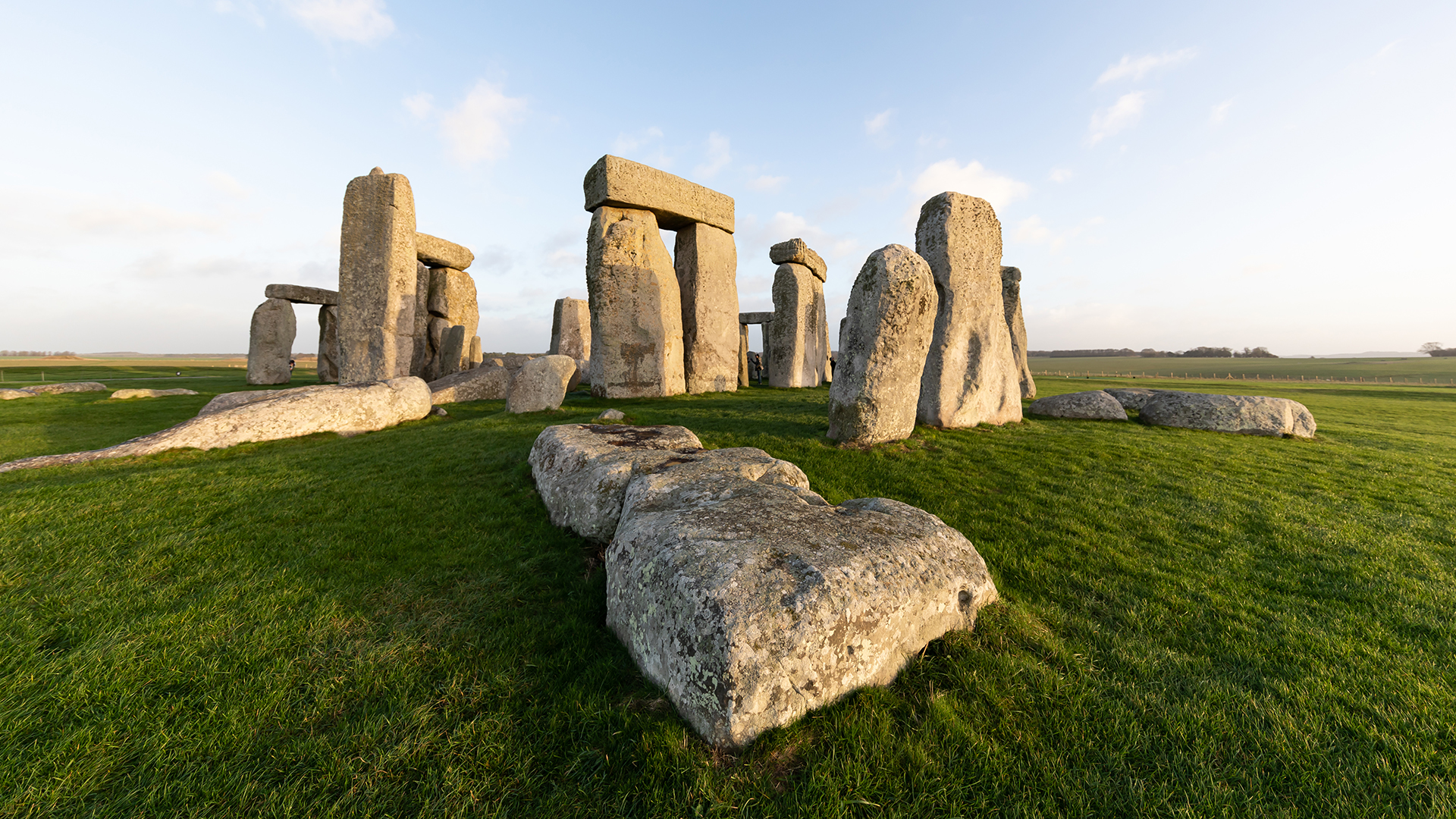Was Stonehenge constructed by builders fueled on 'energy bars'?
The Neolithic treats were made with nuts and fruit.

Stonehenge's builders may have kept up their strength during cold winter months by gulping down sweet, meat-infused "energy bars," historians in the United Kingdom recently proposed.
The iconic ring of standing stones in Salisbury, England was erected between 4,000 and 5,000 years ago, and people in the region at the time — including those who constructed Stonehenge — ate mostly beef, pork and dairy. However, recently excavated evidence at Durrington Walls, a nearby settlement where the monument's builders may have lived, showed that seasonally foraged sweet and savory snacks were also part of the local winter diet.
Archaeologists with the Stonehenge Riverside Project uncovered clues that Neolithic, or New Stone Age people were collecting and cooking hazelnuts, crab apples, sloes (a blue-black berry), and other fruits, Susan Greaney, an archaeologist and senior properties historian at English Heritage (a charity that manages historic monuments in the U.K.), said in a statement. Nuts and fruit may even have been cooked with meat fats to make "a great energy bar, full of calories," Greaney said.
Related: In photos: A walk through Stonehenge
"We know that midwinter and feasting were really important to the builders of Stonehenge," Greaney said in the statement. "We’re lucky to have evidence which tells us that they had access to nutritious fruit and nuts."
Stonehenge's builders may have also mixed savory fat with sweet fruit and nuts and baked them into a pastry like a mince pie, a British seasonal favorite that includes beef suet, fruits, sugar and sometimes alcohol, according to the statement. The earliest records of mince pies date to medieval times and there's no direct evidence of Neolithic baked goods, but cereal crops were farmed thousands of years ago in England and could have been used for baking, according to the statement.
During the time when Stonehenge construction was underway, around 2500 B.C., Neolithic builders and their communities may have enjoyed such delicacies "for celebration as well as sustenance, with the sharing of food helping the community to bond, encouraging people to travel from far and wide to help build Stonehenge," Greaney said.
Sign up for the Live Science daily newsletter now
Get the world’s most fascinating discoveries delivered straight to your inbox.
"We’ll never know for certain what recipes they favoured, but it’s fun to imagine travellers being greeted with a tray of mince pies!" she said. To recreate what that might have been like, English Heritage will be baking and selling Neolithic-style mince pies at Stonehenge through the month of December, according to the statement.
Even if Stonehenge's builders were fueled by mince pies — or meat-flavored energy bars — moving such enormous stones would have been a daunting task. Two types of stones make up the colossal monument's outer circle and inner horseshoe: the larger of these stones are called "sarsens" and the smaller are "bluestones," according to England's Bournemouth University. Sarsens measure up to 30 feet (9 meters) tall and weigh 25 tons (22.6 metric tons) on average, while bluestones (which are so named for their bluish tinge) weigh up to 5 tons (4.5 metric tons).
Scientists still don't know for sure how Neolithic builders managed to transport the giant stones from quarries 180 miles (290 kilometers) away and assemble them into a ring, but in 2016, a group of university students in the U.K. tested one possible method. They dragged a sled carrying a 1-ton (0.9 metric tons) stone block over wooden tracks, with an average hauling speed of about 1 mph (1.6 km/h), Live Science previously reported. And moving the slab required just 10 students — fewer than the researchers expected — which meant the construction work on Stonehenge could have progressed faster than previously calculated, the scientists told Live Science.
Originally published on Live Science.

Mindy Weisberger is an editor at Scholastic and a former Live Science channel editor and senior writer. She has reported on general science, covering climate change, paleontology, biology and space. Mindy studied film at Columbia University; prior to Live Science she produced, wrote and directed media for the American Museum of Natural History in New York City. Her videos about dinosaurs, astrophysics, biodiversity and evolution appear in museums and science centers worldwide, earning awards such as the CINE Golden Eagle and the Communicator Award of Excellence. Her writing has also appeared in Scientific American, The Washington Post and How It Works Magazine. Her book "Rise of the Zombie Bugs: The Surprising Science of Parasitic Mind Control" will be published in spring 2025 by Johns Hopkins University Press.










